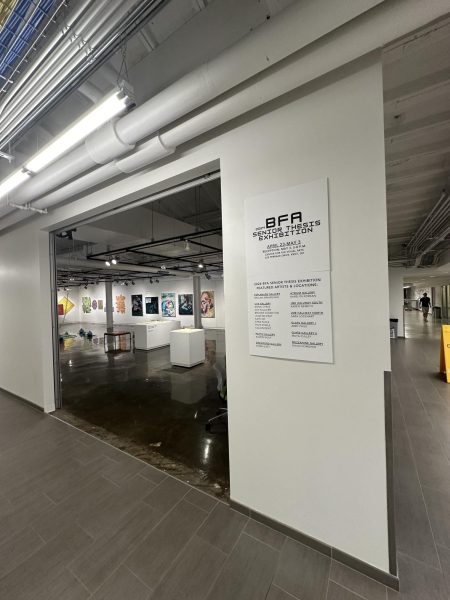Pecha Kucha concept offers more concise way to give presentations
April 6, 2016
Kent State presented Pecha Kucha on Tuesday night in the MACC Annex where a total of five students and professors spoke, to inform others about a more concise way to give a PowerPoint based presentation.
Pecha Kucha is an event that is held in over 800 cities; originally it was devised in Tokyo in 2003 as a way for architectural students to network with professionals. Each presenter has to have a power point with 20 images that are shown within 20 seconds each, according to their website.
“It’s an opportunity for both, students and faculty to collaborate with one another,” said Josh Bird, a visual communication design grad student.
Pecha Kucha offers various colleges to potentially cross over into one another so that individual projects can become something more than just individual projects.
“This style of presentation is so well fitted for cross disciplinary activities,” said Reid Coffman, a professor in the College of Architecture and Environmental Design (CAED). “The presentations go fast, but they are still well formatted.”
According to the website, the format is meant to keep presentations short and to the point so that the presenter is prevented from talking too much.
“This is beneficial for students because the outcomes of it are very successful,” Coffman said.
Bird plans to use the Pecha Kucha format for future projects.
“I’m actually taking the idea of the format and pitch it to our professional organization and see if they’d be interested in doing something like this,” Bird said.
During Bird’s presentation, he explained how he and his partners worked on a project on top hats and how they effected the culture. Each slide was up for only 20 seconds, forcing Bird to move on as he presented. The 20 second rule on each slide challenges presenters to keep their lectures short and to the point, thus making it easier for the audience to comprehend .
“I think it’s interesting to see both students and faculty collaborate and present their projects,” said Forrest Paige, a grad student in the CAED program. “It’s an opportunity for both (students and faculty) to see their work in the real world and taking things out of the classroom.”
Paige added that he would like to have this learning concept used in his own courses at Kent.
“It would be a great idea if professors incorporated this presentation format into their classrooms,” Paige said. “Especially if they were to open it up to cross discipline.”
Adrian Leuthauser is the CAED reporter for The Kent Stater, contact him at [email protected].






















